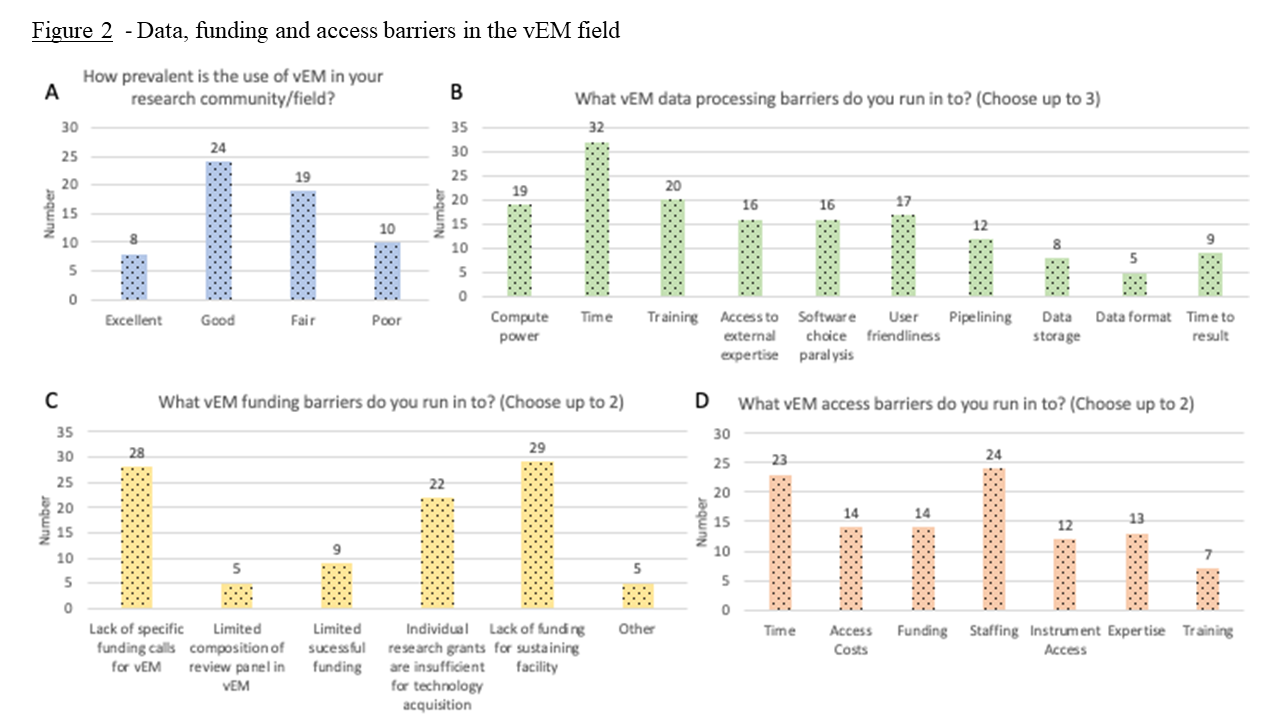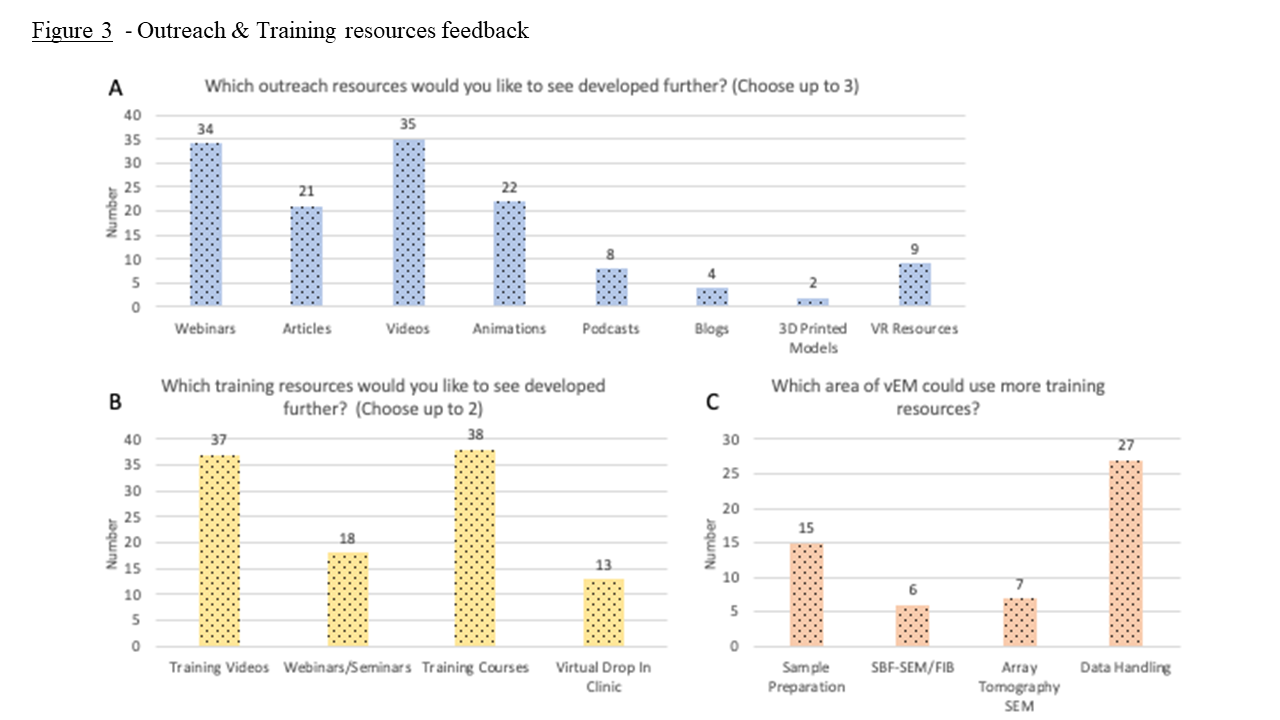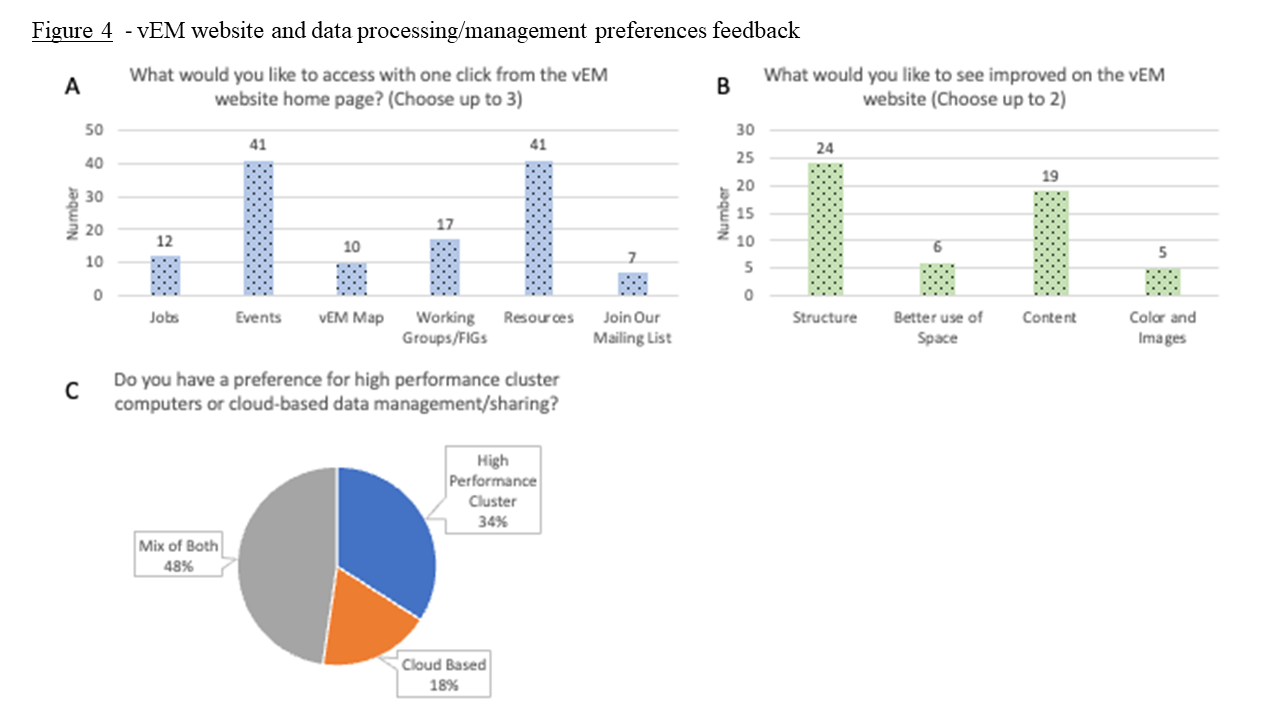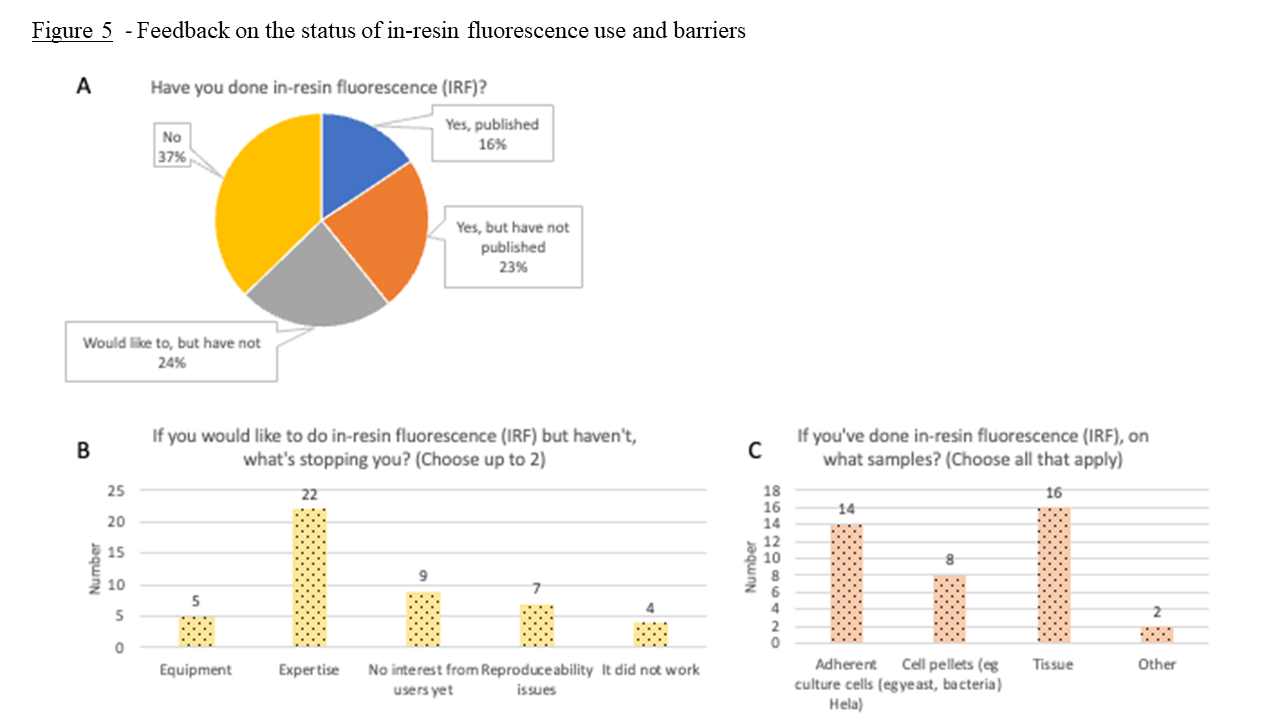
Introduction
The volume EM October 2023 Town Hall had 109 attendees. At the end of the meeting, we had an interactive session focused on gathering feedback from our audience of community members. Sixty-eight people logged in to Mentimeter to provide responses to questions during this session.
Some of the questions were meant to capture an overview of the state of the field and an indication of where it is going, while others were posed by individual working groups and focused on specific use of vEM community resources and tools (outreach options, website preferences, data processing preferences) and finally others were focused on gathering feedback on activities in progress (in-resin fluorescence use, definitions for vEM ontology work).
As appropriate, these questions (or similar) will be posed during interactive sessions at future vEM community events to capture longitudinal trends. This feedback is important to collect regularly to ensure that the activities of the vEM Working Groups best represents the goals and needs of the community.
State of the vEM Field
To understand what vEM techniques the field is moving towards and away from, we asked what vEM techniques are currently being used (Figure 1A) and which you want to use in the future (Figure 1B). Comparing these two outputs (Figure 1C) indicates a shift away from room temperature TEM, correlative vEM and serial block face SEM (SBF-SEM), and towards cryogenic imaging, multi-beam array tomography and both lab-based and synchrotron X-ray imaging.
We next found that vEM techniques have not been taken up consistently across the scientific fields represented by the audience (Figure 2A), indicating more work is needed to share the benefits and use-cases for vEM methods. And finally, looking to barriers to data processing (Figure 2B), funding (Figure 2C) and access (Figure 2D) within the vEM field, the largest barriers are related to time and staffing (or funding for staffing). With regards to data processing, there seemed to be a large number of secondary barriers limiting researcher’s ability to process the data from vEM experiments (compute power, training, user friendliness of software, access to external expertise, software choice paralysis). And with regards to funding, a secondary area of barriers relates to a lack of specific funding calls for vEM technology/use and limitations around the size of funding calls for technology acquisition.
Working Group Feedback
To understand the needs and preferences of the vEM community, questions on specific topics were put forward. These responses will guide the vEM working groups as they prioritise their efforts over the coming months.
The community indicated that they would like access to more webinars and videos (Figure 3A, B) as both outreach tools for interacting with non-vEM communities (including the public) and training tools for teaching scientists about the techniques. Specific areas for additional training needs were identified as overwhelmingly data handling with sample preparation as a secondary area (Figure 3C).
The community indicated that the vEM website (volumeem.org) could be better structured and include additional content (Figure 4B) with access to events and resources more easily accessible (Figure 4A).
The vEM community was next asked about their current comfort levels with cloud-based data handling, processing and sharing, and they indicated that just under half of the community is using a mixture of high-performance cluster (HPC) computers and cloud-based options, with a third using exclusively HPCs and only a fifth using exclusively cloud-based platforms.
In-resin fluorescence (IRF) microscopy is a correlative microscopy technique which merges fluorescence and vEM techniques within a resin embedded sample. It is technically difficult and variable from sample to sample, so the next portion focused on gathering information about the use of the technique. Only a small number of people present were using IRF (Figure 5A), though a quarter of respondents were interested in doing so. Of respondents who were interested in doing IRF in the future, the main barrier to adopting the technique was expertise. And of those respondents who had done IRF the samples used were broadly spread.
The last area of feedback requested from the community was around vEM specific definitions for inclusion in a future vEM ontology. A robust discussion was had around the proposed definitions for biosample, sample, specimen, annotation and segmentation with community agreement high for annotation and segmentation (94% and 100% respectively) but low for biosample, sample and specimen (53%, 50% and 59% respectively), indicating additional work is needed in these definitions. As part of the ontology feedback gathering section, attendees were also asked to write out as many terms related to vEM as they could, generating a list of 130 unique words for future defining.
If you have any comments or questions about these results, or would like to propose any questions or activities for future interactive vEM community sessions, please get in touch by emailing Michele Darrow (michele.darrow(at)rfi.ac.uk).




